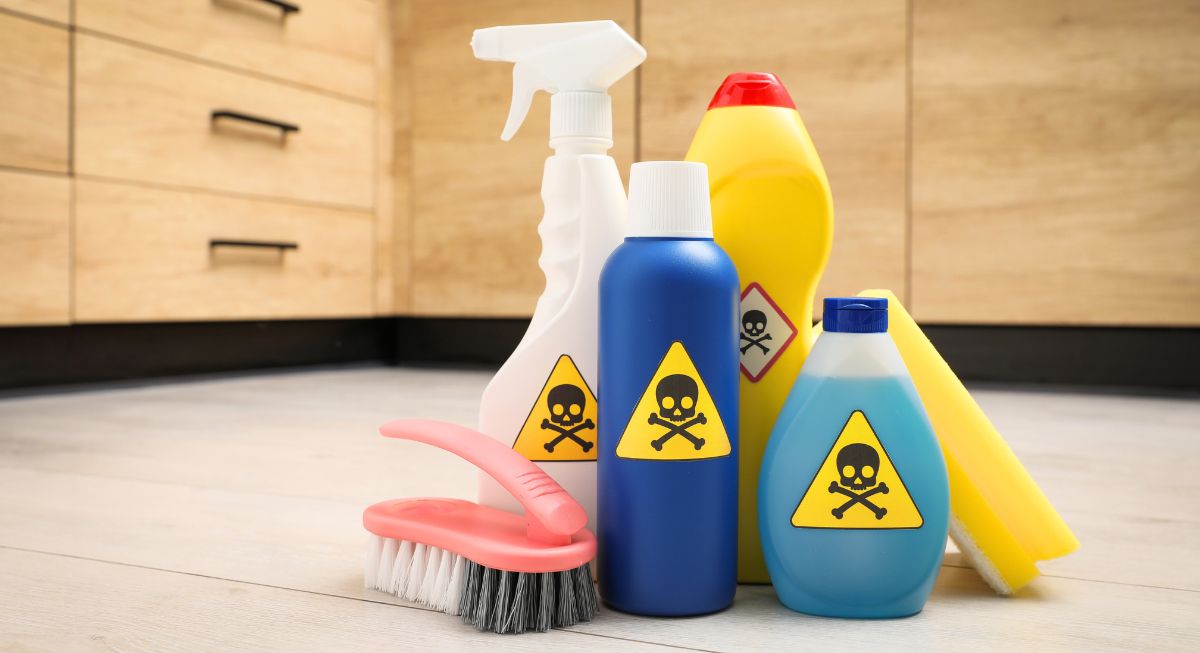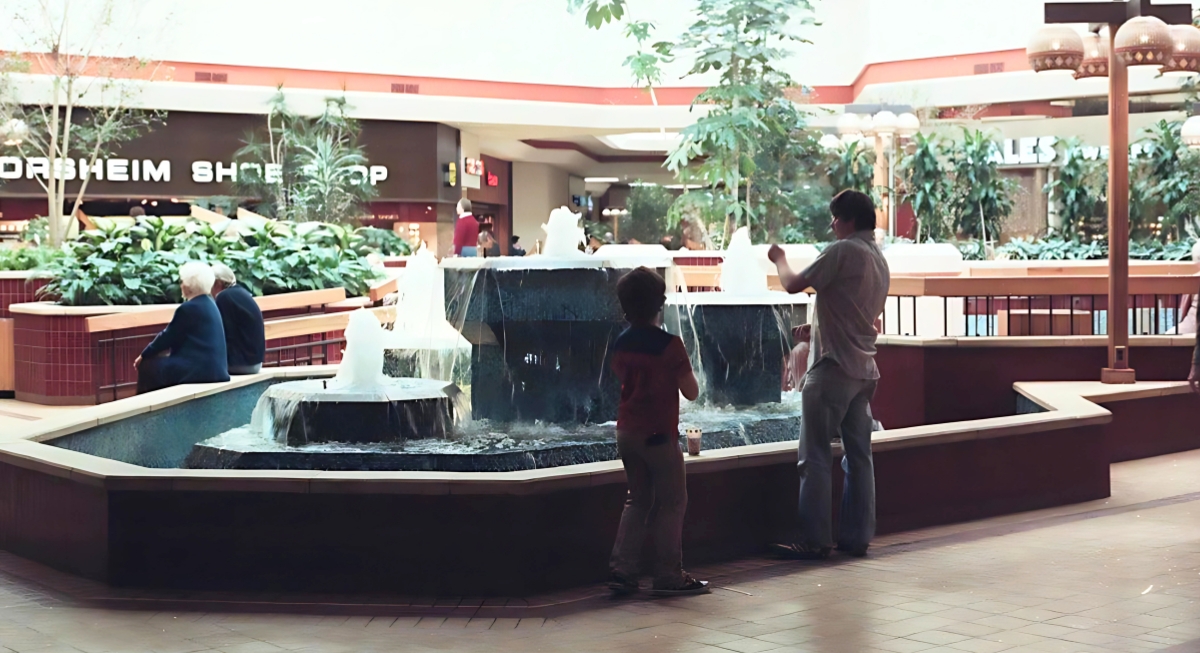The '70s came with some iconic household products that, in hindsight, were downright hazardous. From chemistry kits filled with toxic substances to candy cigarettes encouraging unwelcome practices, these products have thankfully been declared toxic and removed from the shelves. Let’s explore some of these products and how they harmed populations for some time.
Strychnine

Credit: flickr
Strychnine is a potent neurotoxin that was widely used for pest management in the 1970s. It was significantly hazardous and resulted in convulsions. It's been replaced with safer, more contemporary options like eco-friendly pesticides and humane traps. These options are better because they are safer for homes and the environment.
Lye (Sodium Hydroxide)

Credit: pexels
This was a popular cleaner that was present in the majority of households in the 1970s. Known for its intense caustic properties, it causes severe burns. It's replacements like vinegar and baking soda safely provide the same services. These modern options keep your house sparkling without the fear of danger.
Perfluorooctane Sulfonate (PFOS)

Credit: pexels
For stain and water resistance, this was the go-to solution in the '70s. This chemical, now recognized as toxic, accumulated in the environment and human body. Presently, eco-friendly and biodegradable repellents, which are safer for both health and the planet, have replaced them, providing protection free of dangerous side effects.
Dichloro-Diphenyl-Trichloroethane (DDT)

Credit: Wikimedia Commons
Dichloro-Diphenyl-Trichloroethane (DDT) was popular for its effectiveness despite the harm it caused. Its toxins caused severe environmental and health issues. Today, you can use neem oil and diatomaceous earth as safer alternatives. These environment-friendly options ensure health and environmental safety when dealing with pests.
Diazinon

Credit: Wikimedia Commons
While it was the ideal insecticide at the time, its main component, organophosphates, was harmful to humans and animals. It was used for controlling garden pests but posed serious health risks. It has since been replaced by insecticidal soaps and natural predators, ensuring riskless and more effective pest control.
Trisodium Phosphate (Tsp) Cleaner

Credit: unsplash
Trisodium Phosphate (TSP) cleaner was a go-to for heavy-duty cleaning in the '70s. However, its phosphates were toxic to waterways, posing a danger to aquatic life. Today, better options like baking soda and vinegar have eliminated these risks in our surroundings. They ensure clean houses and nature protection.
Mothballs

Credit: Wikimedia Commons
In the '70s, moths were a menace to clothes, and this was the most viable solution then. It contained toxic naphthalene or paradichlorobenzene, which caused respiratory issues. Cedar chips and lavender sachets have since come in to offer effective moth protection without toxic worries.
Aluminum Electrical Wiring

Credit: Reddit
Aluminum electrical wiring was known to overheat and ignite fires in households. It was, therefore, a huge safety hazard because of unreliable conductivity and corrosion problems. However, copper wiring came to the rescue by offering security and reliability. They have provided excellent conductivity and reduced electrical fire risks.
Lead Paint Wall Coatings

Credit: unsplash
Despite containing harmful lead toxins, these paint wall coatings were popular in the '70s. Exposure could result in poisoning, affecting brain development in children. The currently used latex-based and low-VOC paints provide less risky beauty to our walls. They ensure sparkling, durable walls without lead-associated dangers.
Asbestos Insulation

Credit: Wikimedia Commons
The main components in asbestos insulation were fibers that caused lung disease and cancer. This hazardous material was popular for its fire-resistance capabilities. Present-day alternatives, including fiberglass and cellulose insulation, have ensured hazard-free protection with no known health risks. Such contemporary options ensure healthier and more secure homes.
Cyanogas

Credit: Wikimedia Commons
Cyanogas was a staple in the pest control industry. It contained deadly hydrogen cyanide, a gas that posed severe health risks, including respiratory failure. Currently, you can opt for diatomaceous earth or boric acid, which are harmless alternatives in pest management. The new entrants ensure healthier and safer environments.
Gas Space Heaters

Credit: Wikimedia Commons
Carbon monoxide emissions from these space heaters presented serious health risks, including loss of consciousness. Without proper ventilation, these heat providers would be deadly. Electric space heaters and infrared panels have, however, eliminated these risks and ensured warm and danger-free houses.
Flaking Paint

Credit: Wikimedia Commons
Flaking paint was mainly composed of lead, which was a dangerous substance in these products, especially for children. As the paint degraded, it emitted toxic dust into the air. Contemporary latex and low-VOC paints have changed this and assured us of our safety while attempting to beautify the interiors.
Flame Retardants

Credit: pexels
Used in the '70s, flame retardants contained toxic chemicals like PBDEs, which posed health risks. They were intended to reduce the risk of fire to furniture and textiles. This danger has since been eliminated by alternatives such as wool and treated cotton, which have ensured safer indoor environments.
Super Elastic Bubble Plastic

Credit: Reddit
Super Elastic Bubble Plastic was a toy made up of dangerous chemicals like polyvinyl acetate and acetone. Such toxins were harmful to the respiratory system. Updated alternatives, including bubble solutions, ensure fun in the absence of danger. These newer products are healthier and more secure for play adventures.
Microbeads Skin Care Products

Credit: unsplash
These skincare products provided exfoliation despite containing harmful plastic particles. The tiny beads in the product polluted waterways and harmed marine life. However, natural exfoliates like oatmeal, sugar, and coffee grounds have provided organic solutions. They guarantee smooth skin with no damage to the environment.
Creepy Crawlers Toys

Credit: Reddit
Creepy crawlers allowed children to mold rubbery insects. However, they contained toxic chemicals. The heating element and plastic fumes were hazardous to human health. The evolution to non-toxic materials has upgraded safety and protection for users. The little ones can now have fun without worrying about their health.
Dip-A-Flower Kit

Credit: Reddit
The 1970s kids would create plastic flowers using Dip-A-Flower Kits, which was a toxic vinyl solution. This enjoyable crafting adventure involved harmful chemicals and fumes. They have since been replaced by natural materials like paper and fabric, ensuring healthier alternatives. Creative fun can now be had without any danger.
Chemistry Kits

Credit: Wikimedia Commons
While they complemented education through educational experiments, chemistry kits often contained hazardous chemicals like mercury and uranium. As such, children were exposed to toxins that would be detrimental to their health. Presently, chemistry sets use non-toxic substances to ensure safe and fun educational activities within the home environment.
Candy Cigarettes

Credit: Wikimedia Commons
They mimicked real cigarettes, encouraging unhealthy habits in children. These sugary treats were also known for their artificial colors and flavors, which were associated with health hazards. Youngsters can now have fruit snacks and natural candies without unhealthy additives to ensure healthy habit development.





